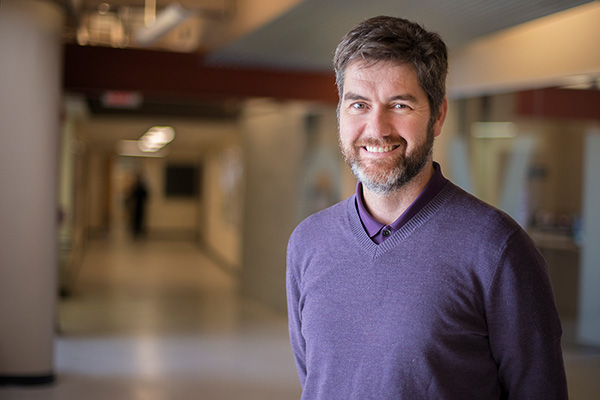Building understanding of nature’s power at water’s edge
February 2, 2018
Share

The 2017 hurricane season is one for the record books. A seemingly relentless line of storms tore, one after another, across the Caribbean and into the Gulf Coast. Seventeen of them were strong enough to be named, with the strongest – Hurricanes Harvey, Irma, Maria, and Nate – conspiring to inflict an estimated 350 deaths and some $400 billion in property damage.
“Climate change is driving sea level rise that will directly impact coastal areas,” says Ryan Mulligan, Assistant Professor in Civil Engineering. “But the oceans are also getting warmer and it’s the heat energy in them that drives the intensity and frequency of tropical cyclones. The warmer the ocean, the more fuel hurricanes have, the farther north they can go, the longer in the year they can last, and the more intense they can be.”
Dr. Mulligan is a coastal engineer who specializes in waves, storms and changes to shorelines. He works closely with Queen’s civil engineering professor Andy Take to study tsunamis generated by landslides, and Queen’s civil engineering professor Leon Boegman to study wave and water level effects on Lake Ontario. Dr. Mulligan also recently earned a grant from the US Office of Naval Research to study waves and sediment movement at a US Army Corps of Engineers site in North Carolina. He plans to continue all that work, and investigate the future effects of hurricanes on coastlines.
“I’m interested in the physics of the situation, how waves behave, and everything we do as engineers is driven by a societal need,” he says. “Hurricanes can destroy roads and pipelines, knock buildings into the ocean, and scour through barrier islands that separate bodies of salt and fresh water. All this can cost lives and billions in property damage and economic loss, not just in the Caribbean and the U.S. but in the Atlantic provinces, Quebec, and Ontario, too.”
So, what does Dr. Mulligan plan to do to help prepare for more frequent and intense storms in the future?
“The first thing we should do, and the direction I’m going, is more research into potential impacts,” he says. “We’re using new computer models to predict outcomes in a particular area from stronger and stronger storms. We explore hypothetical scenarios and develop mitigation strategies after validating computer models using data we gather during real-world storms.”
As those computer models become more and more reliable, engineers and planners will have more information to help inform decisions about emergency preparedness and where to – and where not to – build buildings and infrastructure. It’s research that will help people to adapt more quickly and safely to the coming realities of climate change.
Mulligan also mentors or co-mentors a group of graduate students who work on various projects, including Queen’s PhD candidates Gemma Bullard and Ramy Marmoush, and master’s candidates Alexander Rey and Fatemeh Gholamimahyari. He also works with undergraduate research students and will be looking to recruit more graduate students in the fall.
“My previous students work at Baird and other consulting firms in Canada, the U.S. and the UK,” says Mulligan. “All my grad students who have finished have gone on to careers as coastal engineers. That means there’s a need for that kind of training. The students who come into our civil engineering program and decide to do research in coastal engineering wind up getting specialized jobs in the field they want and our society needs, which is a great thing.”